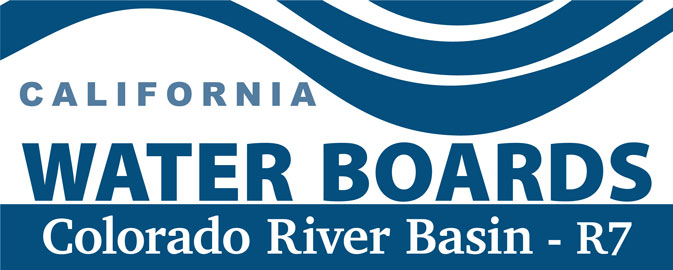Department of Defense (DoD) Program
Quick Links
Program Description | Water Board Regulations and Other Guidance for DoD Sites | CERCLA Process | DSMOA Process | GeoTracker Database Information | GAMA - Groundwater Ambient Monitoring & Assessment Program | Public Reports | Questions or Comments | Additional Regional Water Board Contact Information
Program Description
Soil and groundwater cleanup activities at Departments of Defense facilities are regulated under the Water Board’s DoD cleanup program in conjunction with the California Department of Toxic Substances Control (DTSC). Cleanup of DoD facilities must comply with Water Board policies and directives to protect water quality, beneficial uses, and environmental/ecological health.
Staff in the DoD program are responsible for providing regulatory oversight on issues that affect or threaten groundwater and surface water quality, human health, and the environment. Furthermore, because many former military bases are planned for conversion to civilian use, human health protection associated with redevelopment, including residential reuse is an important cleanup driver. To accomplish our regulatory oversight, we work cooperatively with other State and Federal agencies in both lead and support roles.
Water Board Regulations and Other Guidance for DoD Sites
The Water Boards' DoD Program functions within the legal framework of the Comprehensive Environmental Response, Compensation, and Liability Act (CERCLA), commonly known as Superfund. The following regulations give the Water Board and the RWQCBs the authority to oversee the cleanup activities at polluted sites:
- California Water Code, Division 7
- California Health and Safety Code, Chapter 6.7
- Clean Water Act, Section 402: National Pollutant Discharge Elimination System
CERCLA Process
The CERCLA process consists of several steps as follows:
- Identification - Identify possible contaminant elates that need further investigation though Preliminary Assessment / Site Inspection (PA / SI).
- Investigation - Determine the nature and extent of release, assess long-term risk and develop possible alternative cleanup remedies though Remedial Investigation / Feasibility Studies (RI / FS).
- Proposed Plan - Present the proposed remedial action for public comments.
- Determine a Record of Decision (ROD) - Documents the agreed-upon remedial action.
- Cleanup - Select, design, construct, and operate the cleanup remedy though Remedial Design / Remedial Action (RD / RA).
- Closeout - Measure how well the cleanup solution performs over time or close the site through Operation and Maintenance (O&M) or Closeout.
For more information on the CERCLA Process, see the EPA's Superfund webpage.
- US EPA Superfund Cleanup Process
- US EPA Region 9 Superfund
- Cleanups at Federal Facilities
- Superfund Remedy Decisions
DSMOA Process
To address the cleanup of federal facilities where releases of pollutants have occurred, the State Water Resources Control Board (Water Board) and nine Regional Water Quality Control Boards (RWQCBs) partner with the Department of Defense (DoD) through the use of the Defense and State Memorandum of Agreement Cooperative Agreement (DSMOA CA). The DSMOA CA allows for the expeditious cleanup at military facilities while ensuring compliance with applicable State laws and regulations.
Although agreements between the State and the DoD designate a state "lead" regulatory agency for each facility, regulatory oversight is a cooperative effort among state agencies - including the Department of Toxic Substance Control (DTSC) and the Water Board and the DoD. The Water Board manages the DoD Program on a statewide level and the RWQCBs provide regulatory oversight of cleanup at DoD facilities in their respective regions. RWQCB oversight activities include the following:
- Participating in technical work groups with DoD and other state/federal/local environmental agencies to develop mitigation alternatives for contaminated sites;
- Providing oversight for leaking underground storage tank cases;
- Reviewing and commenting on technical reports/studies designed to develop remedial alternatives;
- Achieving public outreach and education through participation in public meetings, e.g., Restoration Advisory Boards; and
- Ensuring that cleanup is progressing and that all activities comply with applicable and relative and appropriate requirements.
GeoTracker Database Information
GAMA - Groundwater Ambient Monitoring & Assessment Program
GeoTracker GAMA is an online groundwater information system that gives you access to water quality data and connects you to groundwater basics and protection information. This online database integrates groundwater quality data from multiple sources, which are searchable by chemical or location with results displayed on an interactive Google maps interface
Public Reports
The following links provide public information that is available.
- State Water Board Public Records Center
- Region 7 Public Records Center
- Data and Databases
- GeoTracker
- GeoTracker GAMA
- USEPA DoD
- DoD Moving Forward With Task Force to Address PFAS
Questions or Comments
- Email: geotracker@waterboards.ca.gov
- Phone: (866) 480-1028
- Region 7 Contact Us Information
- DoD Program Manager
Angela Garcia, PG
Senior Engineering Geologist
Email: angela.garcia@waterboards.ca.gov
Phone: (760) 674-8613
Colorado Regional Water Quality Control Board
73-720 Fred Waring Drive Suite 100
Palm Desert, CA 92260
Fax: (760) 341-6820



